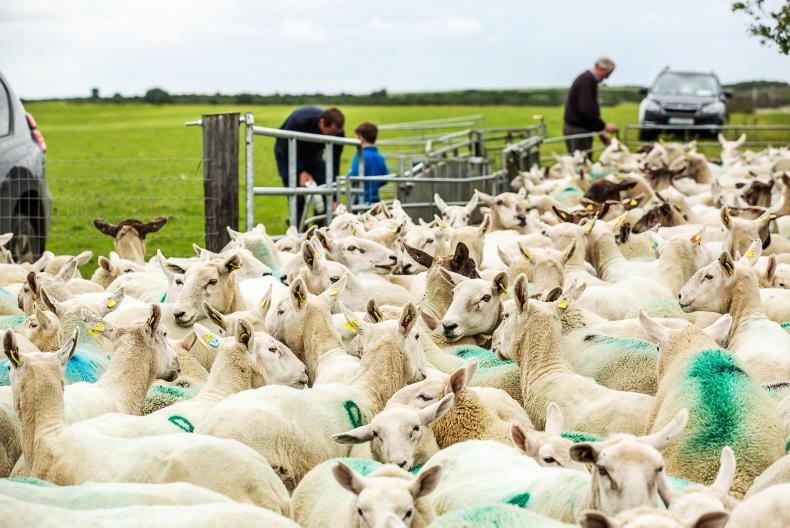Ewe numbers fell by 1.3% or almost 86,000 head last year to sit around 2.66 million by the end of 2022, according to last year’s Department of Agriculture sheep census.
However, a 1.8% rise in the number of non-breeding sheep means that the overall drop across all sheep was only 0.35% on 2021.
Last year was the first year for sheep numbers to fall since 2018, but numbers still remain at their second-highest level in recent years.
Donegal continues to have the biggest flock of any county at 368,00 ewes, with Limerick having the smallest at only 13,500.
Lowland v hill
The national ewe flock continues to have slightly more lowland and lowland-crosses than it does hill and hill-crosses.
The census puts this breakdown at 1,358,000 and 1,304,000 ewes respectively.
This lowland-hill gap widens when it comes to breeding rams, with 71% of rams being of lowland breeds.
Just under half of all hill sheep in the country could be found in the three counties of Donegal, Mayo and Kerry.
Counties Kerry and Waterford had the highest proportion of their flocks recorded as hill, while the biggest counties for lowland sheep were Galway, Donegal and Roscommon.
Flock sizes
The average flock size was 113 in 2022, up by two head on the previous year’s figures.
Around 40% of all flocks have 50 sheep or fewer, with a further 25% having between 51 and 100.
The number of smaller flocks returned to a level in line with previous years after seeing an 18% rise in 2021.
This resulted in the number of flocks dropping from 42,014 in 2021 to 35,555 last year.
Wicklow has the largest average flock size at 185 ewes, while Clare has the smallest at 49 ewes.
One in every 40 flocks nationally has more than 500 sheep.






 This is a subscriber-only article
This is a subscriber-only article










SHARING OPTIONS: